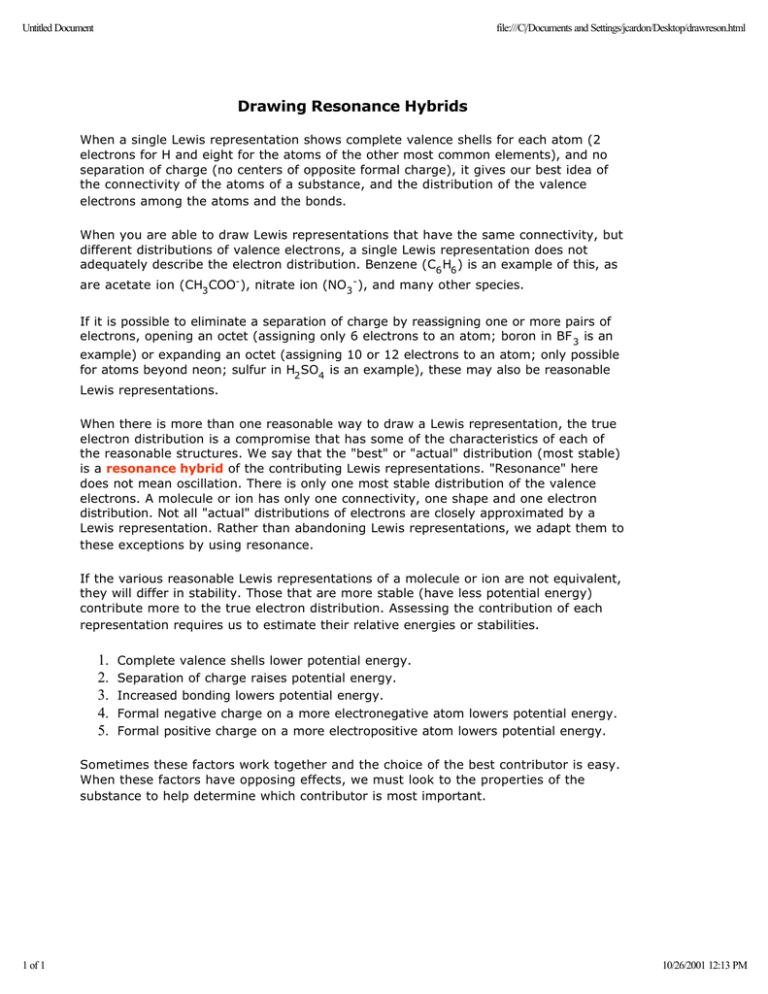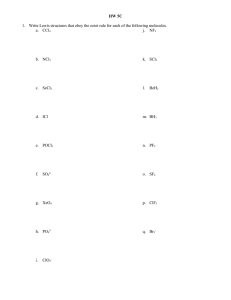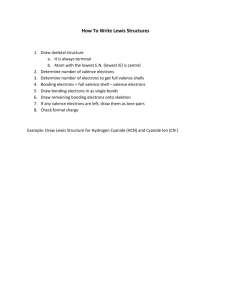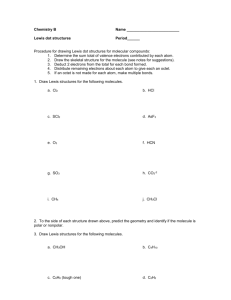Drawing Resonance Hybrids
advertisement

Untitled Document file:///C|/Documents and Settings/jcardon/Desktop/drawreson.html Drawing Resonance Hybrids When a single Lewis representation shows complete valence shells for each atom (2 electrons for H and eight for the atoms of the other most common elements), and no separation of charge (no centers of opposite formal charge), it gives our best idea of the connectivity of the atoms of a substance, and the distribution of the valence electrons among the atoms and the bonds. When you are able to draw Lewis representations that have the same connectivity, but different distributions of valence electrons, a single Lewis representation does not adequately describe the electron distribution. Benzene (C6 H6 ) is an example of this, as are acetate ion (CH3 COO- ), nitrate ion (NO3 - ), and many other species. If it is possible to eliminate a separation of charge by reassigning one or more pairs of electrons, opening an octet (assigning only 6 electrons to an atom; boron in BF 3 is an example) or expanding an octet (assigning 10 or 12 electrons to an atom; only possible for atoms beyond neon; sulfur in H2 SO4 is an example), these may also be reasonable Lewis representations. When there is more than one reasonable way to draw a Lewis representation, the true electron distribution is a compromise that has some of the characteristics of each of the reasonable structures. We say that the "best" or "actual" distribution (most stable) is a resonance hybrid of the contributing Lewis representations. "Resonance" here does not mean oscillation. There is only one most stable distribution of the valence electrons. A molecule or ion has only one connectivity, one shape and one electron distribution. Not all "actual" distributions of electrons are closely approximated by a Lewis representation. Rather than abandoning Lewis representations, we adapt them to these exceptions by using resonance. If the various reasonable Lewis representations of a molecule or ion are not equivalent, they will differ in stability. Those that are more stable (have less potential energy) contribute more to the true electron distribution. Assessing the contribution of each representation requires us to estimate their relative energies or stabilities. 1. 2. 3. 4. 5. Complete valence shells lower potential energy. Separation of charge raises potential energy. Increased bonding lowers potential energy. Formal negative charge on a more electronegative atom lowers potential energy. Formal positive charge on a more electropositive atom lowers potential energy. Sometimes these factors work together and the choice of the best contributor is easy. When these factors have opposing effects, we must look to the properties of the substance to help determine which contributor is most important. 1 of 1 10/26/2001 12:13 PM






